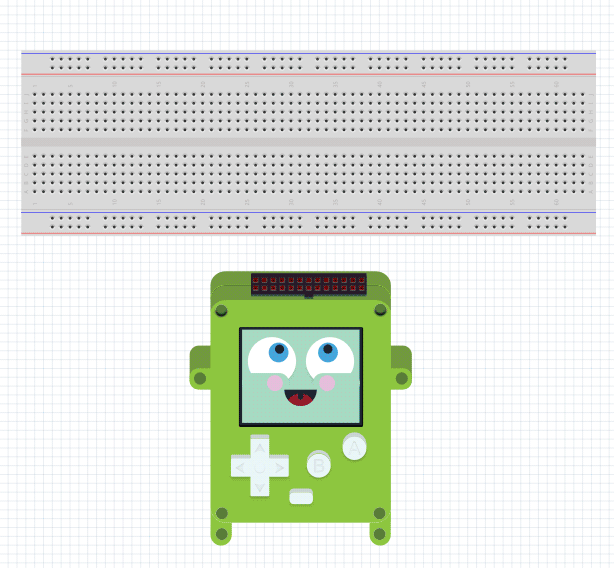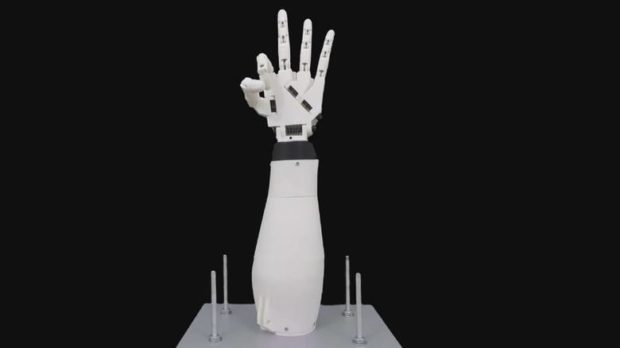
Italian culture is known throughout the world as being warm and welcoming, and Italians certainly know how to throw a party. Just look at the annual celebration hosted in the fair city of Rome for the past five years: Maker Faire Rome, affectionally taglined as “The European Edition,” has been going strong and just getting bigger and more lively since the very first year.
For three days in a row, this year being December 1 through 3, makers from all over the planet convene at one of the largest DIY festivals in the world. This international mix-and-mingle undoubtedly is responsible for the creation of so many new makers and collaborations. Here we look at 10 of the hundreds of maker-made projects on display at this year’s Maker Faire Rome. Check out the website for a complete list of exhibitors and for all the information you need to attend. Wondering what the story is with the two images at the top of this post? Read on to find out!
1. Bratislava, Slovenia: Wooden Aquarium
The Wooden Aquarium is a project of low-cost furniture by the makers at Creative Point fab lab. The production cost for the whole aquarium is less than 5 euros, making it accessible to many people. It’s designed in Corel Draw and cut on a laser cutter. All the walls are made from plywood, and the front is made of plexiglass. How does the water not flow through? The solution is to use common lamination foil on paper, which is ironed onto the wood, so waterproofing is ensured. To reinforce the walls, they used non-toxic silicone. This solution is cheap, lightweight, and safer than a glass aquarium. Part of the aquarium is a hydroponic system that oxygenates water using a solar panel.
2. Gothenburg, Sweden: Hangprinter
Hangprinter is a RepRap 3D printer notable for its unique frameless design. The Hangprinter Project was started by Torbjørn Ludvigsen in 2014 with the goal of democratizing large-scale freeform fabrication. By investing the time, and $250 in parts, any interested person should be able to Hangprint objects of any shape that fits within a few cubic meters. The machine can even retract itself to the ceiling when not in use.
3. Bangalore, India: Terra Neeru
In a monsoon-dependent country like India, the water crisis has pushed the farmer to brink of extinction. In 2010, only about 35% of agricultural land in India was reliably irrigated. About 2/3 of the cultivated land in India is dependent on monsoons. Terra Neeru aims to introduce an IoT-based commercially viable large-scale system where the moisture, humidity content, water temperature, light composition, and intensity can be controlled. The modular aquaponics system becomes commercially feasible when it’s democratized and accessible at the consumer level, and electronic controllers make this possible.

4. Rotterdam, Netherlands: Qmod Energy Kit
The Qmod energy kit, developed by Dana Cannam, is developed to empower kids to learn, explore, and create with electricity found in common everyday objects. Qmod toys are designed to allow kids to learn about the science of energy in a hands-on and memorable way, create new inventions with the energy they have learned to harness, and most of all, have fun powering their imaginations with the possibilities of what the future of energy might be.
5. Amburgo, Germany: To-Not-Disappear
Though we keep on making them, we all know that the culture of selfies is somewhat selfless. Every day, we keep on seeing an endless number of pictures of friends and acquaintances, all looking the same: posing to appear sexy, sweet, cool, or something similar, but behind the attitude, we show very little of who we are. To-Not-Disappear is an interactive mirror/camera, made by Luisa Fabrizi and Andre Landwehr, that forces visitors to give up the steadiness of beauty and coolness in exchange for presence and personality. Visitors must scream or make noise to be visible. You won’t appear in the picture if you don’t give yourself the chance of self-expression, and to do that, you have to renounce to fit in. What remains of those who are too shy to make their presence visible is nothing more than a blurred ghost.
6. Lausanne, Switzerland: Skyentific Robot Flower
The Skyentific robotic flower by Gennady Plyushchev has nine servo motors and nine degrees of freedom (three motors for the leaves, three motors for trunk, and three motors for the petals). The base of the robot uses compression and extension springs to create the smooth motion. An Arduino Mega board controls the motors in a beautiful waltz dance.

7. Lahti, Finland: Pokitto DIY Open-Source Gaming Gadget
Pokitto is a do-it-yourself gaming gadget, suitable for both children and adults, that can teach you programming and electronics in a fun way. You can assemble it yourself, with no tools required, and use any computer or tablet to program it, with no installation needed. Pokitto is a fun way to learn how modern intelligent gadgets work. You can play games, learn programming and create your own applications and electronic gadgets.
8. Rehovot, Israel: How Fast?
How Fast? is a fun series of speed tests, created by Avishay Orpaz. Accomplish the task at hand as fast as you can and watch the speed bar goes up. Tasks include drumming, hitting buttons, and responding to visible stimulus. Compare your results to previous participants and try to break the record.
9. Athens, Greece: Hand of Rob
Hand of Rob was created by 16-year-old student Thanos Tziatzioulis, inspired by seeing someone with a plastic hand, similar to one of a mannequin. He wanted to help by constructing a hand that could move with the movement of the other hand. Using information gleaned from the internet and a 3D printer, he fabricated Hand of Rob of ABS plastic, ropes, metal screws, cables, motors and Arduino. It weighs about 2kg and is as long as an average adult hand. A glove having five sensors on it and a plaque transmits orders to the Arduino through five cables.
Since the first iteration, he has added a project box, an LCD screen, and eight buttons, each one of them performing a different function. In addition, inside the project box, there are five PCBs, two cables transmitting power to the motor, five cables transmitting data, and 7 cables that allow the glove to operate. Finally, the Arduino Uno was upgraded to an Arduino Mega ADK and was moved inside the control box. The user is now able to control the functions of the robotic hand without connecting it to a computer.
10. Barcelona, Spain: Portrait Painter
Portrait Painter is a robot created by José Salatino that paints portraits with brushes and paint, using a digital image as a source of information. There are no points, no lines to reproduce the image, just real brush strokes generated, like those used by a human painter. The bot is totally autonomous, selects between four different brushes, cleans them when it changes color or tone, and mixes the different paints to obtain more than 150 different colors.
The Maker Faire Rome website has all the information you need to join the celebration on December 1 through 3.
ADVERTISEMENT
























